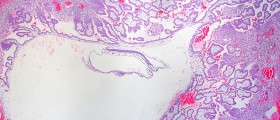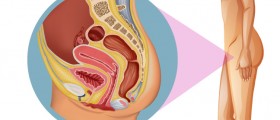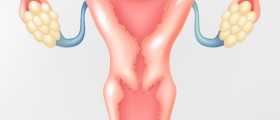
There are many women suffering from endometriosis. This medical condition is characterized by spread of endometrial cells outside the uterus where they are normally localized. Many organs may be affected by endometriosis, but the condition predominantly remains localized onto the pelvis and organs such as the uterus, fallopian tubes, bladder, rectum and the peritoneum.
The Onset and Symptoms of the Disease
Endometriosis affects only women in their reproductive years, when the uterus sheds on monthly bases and endometrial cells may transfer to different parts of the body. There are several theories regarding the onset of the condition. The most likely cause of endometriosis is retrograde movement of endometrial cells which instead of being expelled from the body via the vagina, start to move through the fallopian tubes and are then released in the pelvis.
Symptoms and signs of endometriosis range in severity and generally depend on the affected organs as well as the size of endometrial cell build-up.
In the majority of cases women complain about chronic pelvic pain, extremely painful periods, heavy/abnormal menstrual flow, deep pain during sexual intercourse, pain during ovulation, painful bowel movements or painful/frequent urination and inability to stay pregnant due to endometriosis.
Treatment for Women Who are Trying to Conceive
Women who have trouble conceiving are referred to a fertility specialist who performs a set of tests and exams and performs a laparoscopy in order to evaluate reproductive organs and figure out the underlying cause of infertility.
If endometriosis is mild, doctors suggest no treatment and advise a woman to continue trying to conceive for 6-12 month. If after that period of time the woman does not conceive, she will undergo surgical removal of abnormal growths and tissues. This is performed laparoscopically. Endometrial tissue found on different organs is removed with the assistance of laser or some surgical tool.
Another quite successful procedure for endometriosis is tubal flushing. It unblocks the fallopian tubes and makes them transient for the egg.
Women who have not managed to conceive even after being surgically treated may opt for assisted conception route such as intrauterine insemination. Only after this fails to provide with desirable results, the women is left with one more treatment option, IVF, in vitro fertilization.
It is estimated that laparoscopic treatment significantly improves the chance for pregnancy in women suffering from mild form of endometriosis. The chance to conceive is reduced in women who deal with moderate or severe forms of the disease, especially if there is different degree of damage to ovaries.
All in all, even most complex cases of endometriosis may be brought under control and such women given a chance to give birth to a healthy, full-term baby.

















Your thoughts on this
Loading...